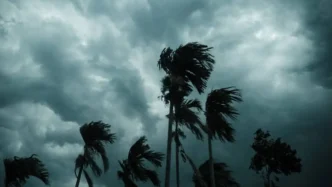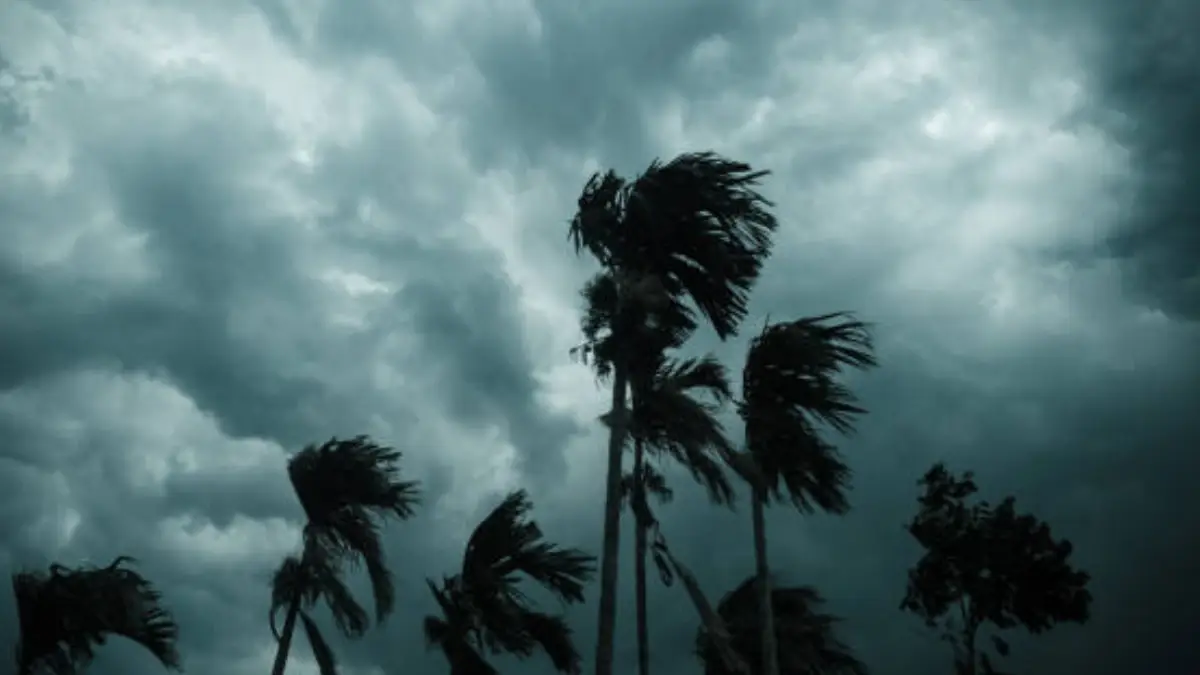Thailand is on high alert as a powerful southwest monsoon and an active monsoon trough bring isolated heavy rainfall and towering waves to much of the country. The Thai Meteorological Department has issued urgent warnings for residents in vulnerable areas to prepare for potential flash floods and water overflows, while mariners are cautioned against navigating the turbulent Andaman Sea, where waves are expected to reach up to 3 meters.
Monsoon Trough Fuels Severe Weather
A monsoon trough extending across Thailand’s northern regions and into upper Laos and Vietnam, combined with a robust southwest monsoon sweeping over the Andaman Sea, Thailand, and the Gulf of Thailand, has set the stage for intense weather conditions. The Thai Meteorological Department reported on Monday that these systems are driving scattered thundershowers and isolated heavy rain across multiple regions, posing significant risks to communities near foothills, lowlands, and waterways.
In the upper Andaman Sea, strong winds are forecast to whip up waves between 2 and 3 meters, with heights exceeding 3 meters during thundershowers. The lower Andaman Sea is expected to see waves around 2 meters, also rising higher during storms. Authorities have advised all vessels to exercise extreme caution and avoid sailing during these hazardous conditions. Small boats in the upper Andaman Sea have been explicitly urged to remain ashore until the weather stabilizes.
Regional Impacts and Warnings
The heavy rainfall is anticipated to affect nearly every region of Thailand over the next 24 hours. In the North, areas such as Mae Hong Son, Chiang Mai, and Chiang Rai are bracing for isolated heavy rain alongside scattered thundershowers, with temperatures ranging from a low of 24°C to a high of 36°C. The Northeast, including provinces like Loei, Nong Khai, and Udon Thani, faces similar conditions, with maximum temperatures reaching 35°C.
Central Thailand, including Lopburi and Kanchanaburi, is also under threat of heavy rain, while the East, encompassing Nakhon Nayok and Rayong, expects waves of 1-2 meters in coastal areas, rising above 2 meters during storms. The South’s west coast, particularly Ranong, Phang Nga, and Phuket, is forecast to experience isolated heavy rain and waves of 2-3 meters, with surges beyond 3 meters during thundershowers. On the east coast of the South, provinces like Chumphon and Surat Thani are preparing for scattered storms.
In the Bangkok metropolitan area, residents are warned of scattered thundershowers and isolated heavy rain, with temperatures expected to peak at 36°C. The capital, often prone to flooding during the monsoon season, is a focal point for local authorities monitoring water accumulation.
Risks of Flash Floods and Maritime Hazards
The primary concern for Thai authorities is the risk of flash floods and water overflows in low-lying areas and near waterways. Residents in at-risk zones have been urged to stay vigilant and prepare for sudden inundation caused by the accumulation of heavy rainfall. Thailand’s monsoon season frequently brings such challenges, disrupting daily life and damaging infrastructure, particularly in rural and mountainous regions.
At sea, the situation is equally dire. The towering waves in the Andaman Sea pose a significant threat to maritime activities, including fishing and tourism, which are vital to coastal economies like Phuket and Phang Nga. The Thai Meteorological Department’s directive for small boats to remain ashore underscores the severity of the conditions, as even experienced sailors face heightened risks during thundershowers.
Community Preparedness and Response
Local governments and disaster response units are mobilizing to mitigate the impact of the severe weather. In provinces like Chiang Mai and Udon Thani, community leaders are disseminating warnings and preparing emergency shelters for potential evacuations. Along the coast, port authorities are enforcing restrictions on boat travel to prevent accidents amid the high waves and strong winds.
For many Thais, especially those in flood-prone areas, the monsoon season is a time of heightened caution. Farmers in the Northeast, a region heavily reliant on agriculture, are particularly vulnerable to sudden floods that can destroy crops and livelihoods. Meanwhile, urban centers like Bangkok face the perennial challenge of managing stormwater drainage to prevent widespread flooding in densely populated areas.
Looking Ahead
As Thailand navigates this bout of severe weather, the resilience of its communities and the effectiveness of its disaster preparedness will be tested. The Thai Meteorological Department continues to monitor the monsoon trough and southwest monsoon, promising updates as conditions evolve. For now, the focus remains on safeguarding lives and property against the dual threats of heavy rain and turbulent seas.
With waves still crashing against the shores of the Andaman Sea and rainclouds looming over the horizon, Thailand stands united in facing nature’s fury, hoping for calmer days ahead.















